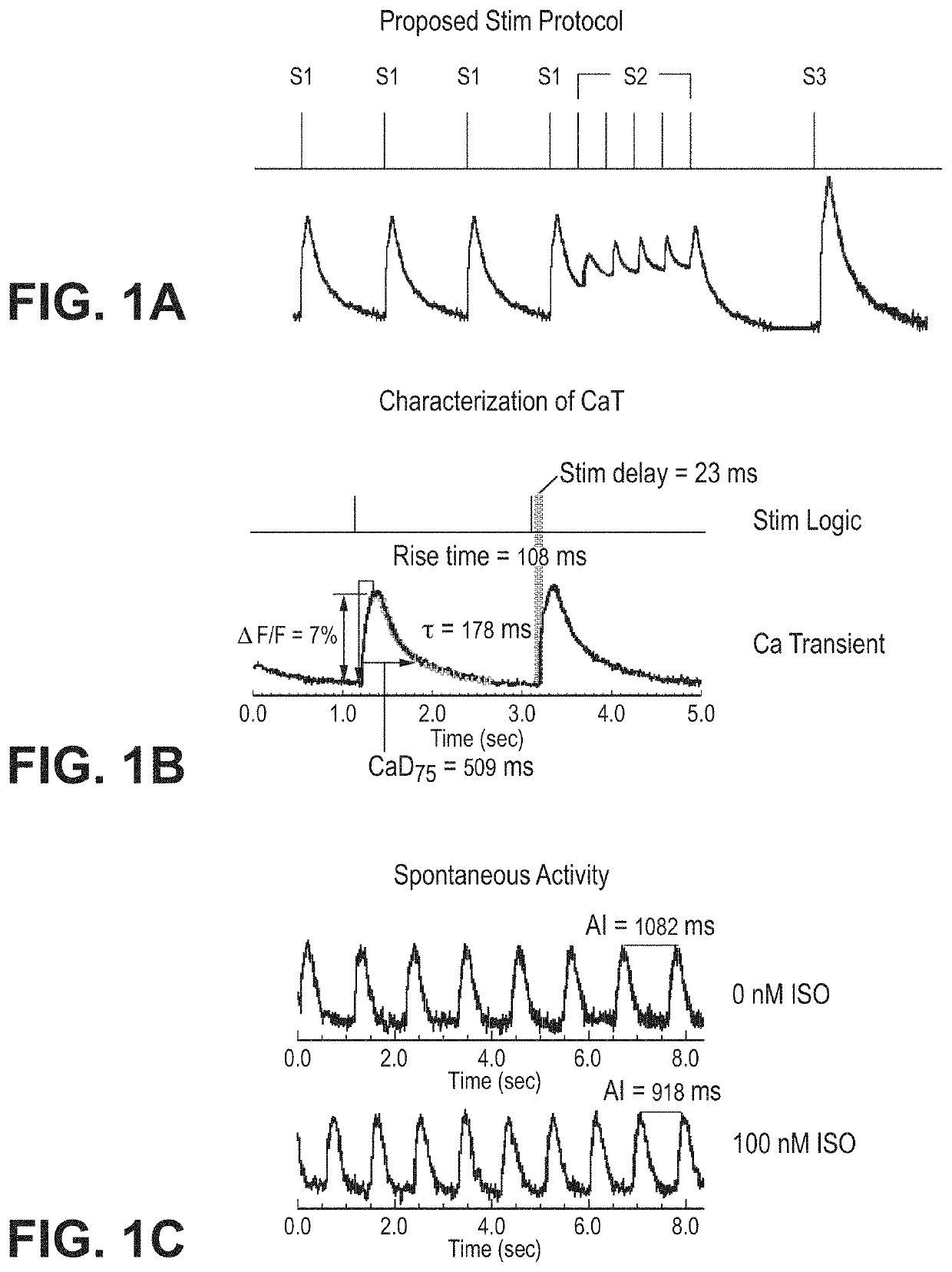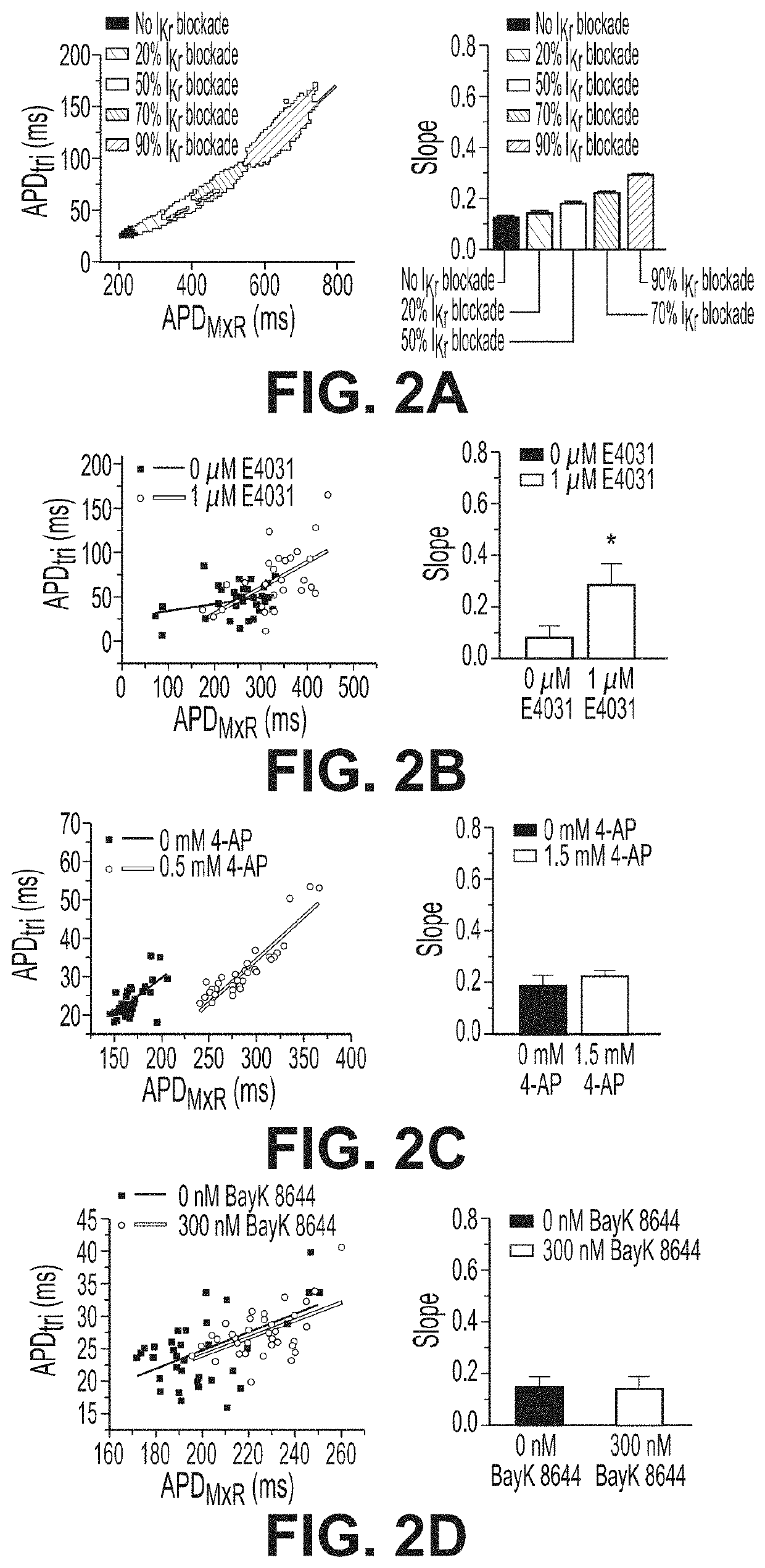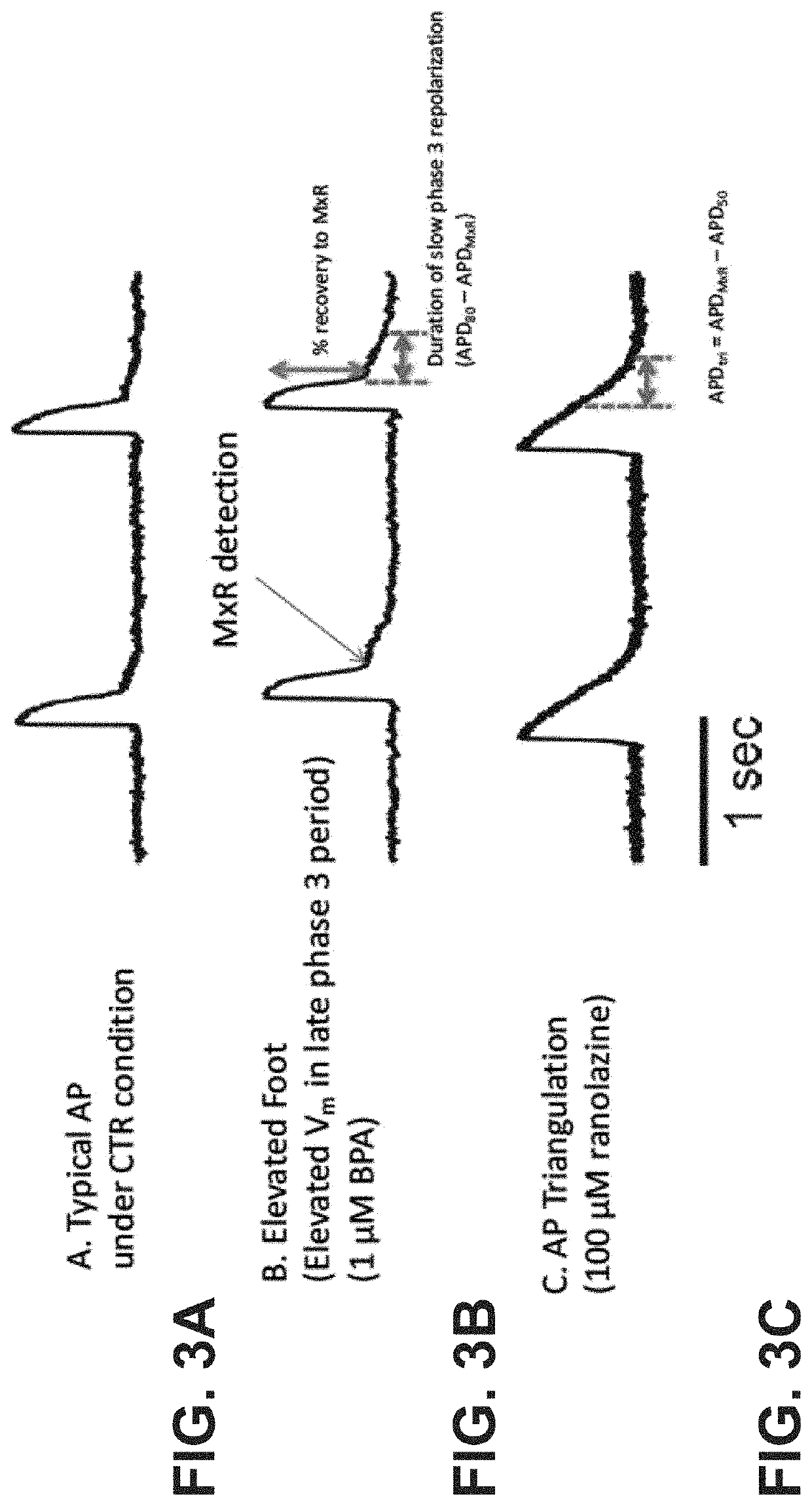Human in vitro cardiotoxicity model
a human in vitro and model technology, applied in the field of human in vitro cardiotoxicity model, can solve the problems of increasing the cost of developing new drugs, affecting the development of new drugs, and severe cardiac effects of environmental and industrial chemicals and pharmaceutical drugs, so as to improve the safety of human exposure levels, improve the risk of tachyarrhythmia or conduction block, and improve the effect of pacing ra
- Summary
- Abstract
- Description
- Claims
- Application Information
AI Technical Summary
Benefits of technology
Problems solved by technology
Method used
Image
Examples
example 1
Metric Innovations
[0083]The inventors developed improved analyses for extracting quantitative metrics of a voltage signal (the action potential, AP) and a calcium signal (calcium transient, CaT) of cardiomyocytes. Metrics can be used for gaining a deeper understanding of the biology underlying the action potential for purposes such as toxicity evaluation. Fast Fourier transform (FFT) was used to automatically distinguish responsive microtissues from non-responsive microtissues lacking APs. Microtissues without APs are automatically removed based on peak FFT (FFTmax). Automated thresholding uses Otsu's thresholding or cross entropy segmentation. Blob coloring algorithm detects individual microtissues. Fluorescence signals within the same microtissue are averaged to acquire high signal-to-noise ratio and increase fidelity of data analysis. Automated analysis uses the first derivative (dF / dt) for detecting action potential upstroke to calculate duration to 30, 50, 80, 90% recovery (APD...
PUM
 Login to View More
Login to View More Abstract
Description
Claims
Application Information
 Login to View More
Login to View More - R&D
- Intellectual Property
- Life Sciences
- Materials
- Tech Scout
- Unparalleled Data Quality
- Higher Quality Content
- 60% Fewer Hallucinations
Browse by: Latest US Patents, China's latest patents, Technical Efficacy Thesaurus, Application Domain, Technology Topic, Popular Technical Reports.
© 2025 PatSnap. All rights reserved.Legal|Privacy policy|Modern Slavery Act Transparency Statement|Sitemap|About US| Contact US: help@patsnap.com



